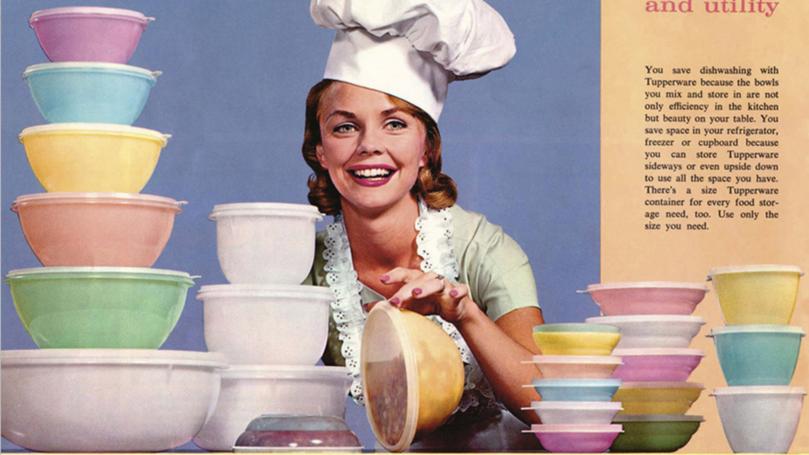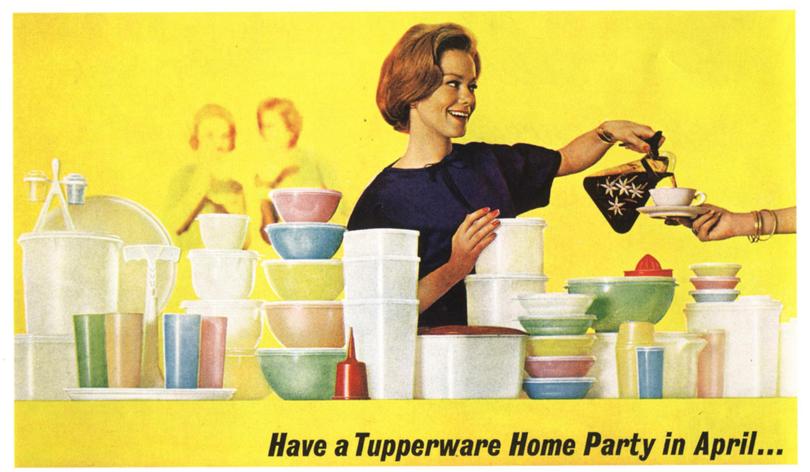What do I do with my Tupperware now that the company has filed for bankruptcy? Your questions answered

It seems the Tupperware party is truly, finally over, because after 78 years of business, the iconic company renowned for its colourful and innovative storage solutions has filed for bankruptcy in America.
Tupperware Brands, and some of its subsidiaries, finally caved to dwindling demand and mounting financial losses, marking the end of an era for a company that once had a stranglehold on the storage solutions market.
Tupperware has reported declining sales for six consecutive quarters, since the third quarter of 2021. Sales sharply dropped after a brief boost during the pandemic — when demand for storing home-cooked meals was, arguably, at an all-time high.
Sign up to The Nightly's newsletters.
Get the first look at the digital newspaper, curated daily stories and breaking headlines delivered to your inbox.
By continuing you agree to our Terms and Privacy Policy.The slump in sales compounded the challenge of rising production, labour, and freight costs.
Tupperware’s chief executive officer Laurie Goldman said the Chapter 11 filing was the “best path forward”.
“This process is meant to provide us with essential flexibility as we pursue strategic alternatives to support our transformation into a digital-first, technology-led company better positioned to serve our stakeholders,” she said in a statement.
But now that the Titanic of the storage world has sunk, what are we supposed to do with our mountains of containers? Are their sauce-stained interiors and warped lids now treasured collector’s items (a la CorningWare dishes)?
Should we keep wrestling with precariously stacked containers and warped lids that spill from kitchen cupboards? Or keep them tucked away, safe from wear and tear that may (heaven forbid) bust the container?
Tupperware has built much of its reputation on its long-honoured lifetime warranty.
That policy guarantees its products “to be free of manufacturing defects and to perform under normal domestic conditions for the lifetime of the product”.
If a product fails because of “manufacturing defects” — like chipping, breaking, peeling, cracking, warping (for post-1979 products) — Tupperware would assess the damage and replace part or all of the faulty product. Or, at the very least, offer a voucher to buy something else.
At the time of publishing, the Tupperware website has not changed this policy after the bankruptcy announcement. So if you still have proof of purchase, you’re good to send your damaged wares back

It’s unclear how much longer Tupperware goods will be up for grabs in retailers and online. Especially now that Tupperware Parties are a hazy long-gone relic of the past.
In its release announcing its Chapter 11 filing, Tupperware said it would seek court approval to continue operating during the bankruptcy proceedings.
The company said it “remains focused on providing its customers with its award-winning, innovative products through Tupperware sales consultants, retail partners and online.”
“The company will also seek court approval to facilitate a sale process for the business in order to protect its iconic brand and further advance Tupperware’s transformation into a digital-first, technology-led company.,” the statement said.
The Nightly asked Tupperware Australia about its lifetime warranty policy and availability of products amid the bankruptcy proceedings but did not receive a response.
So treasure those mangled, once-technicolour lids that seemingly refuse to match any container in your kitchen.
You may one day meet someone who cannot recall the glory days of livingroom Tupperware Parties; or someone who only knows the word as a lowercase catch-all for that thing that stores pasta sauce.
And when you are invited to the picnic and when it’s time to eat and everyone brings out their new fan-dangle containers, you can present your humble, still-airtight container of sandwiches and, like a bizarre domestic Crocodile Dundee, say: that’s not Tupperware, this is Tupperware.
